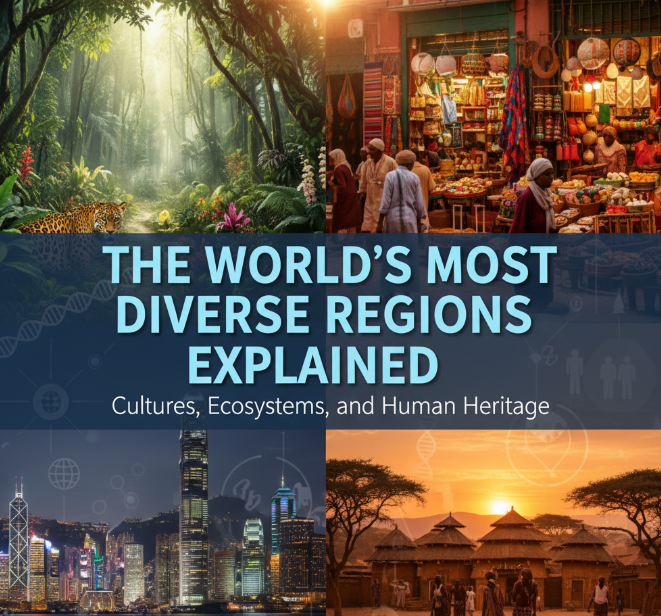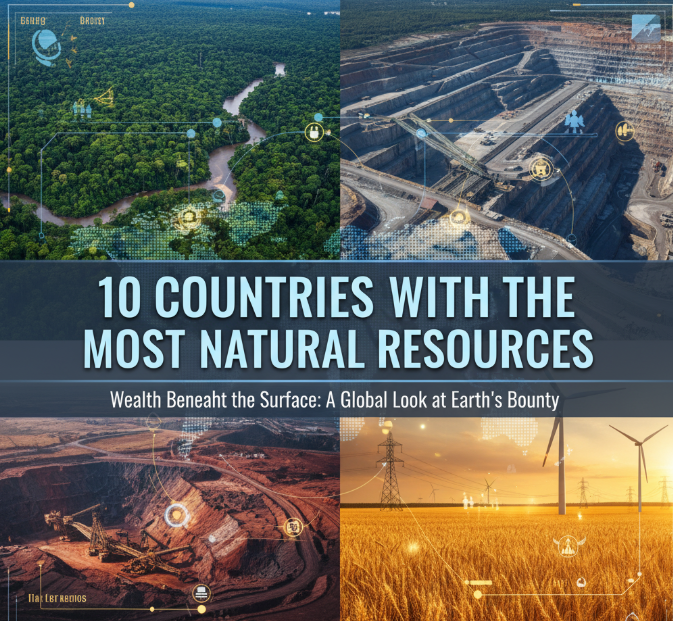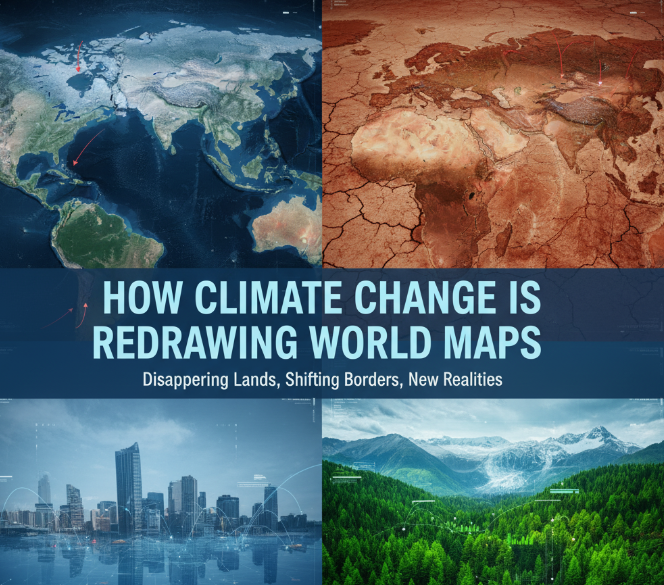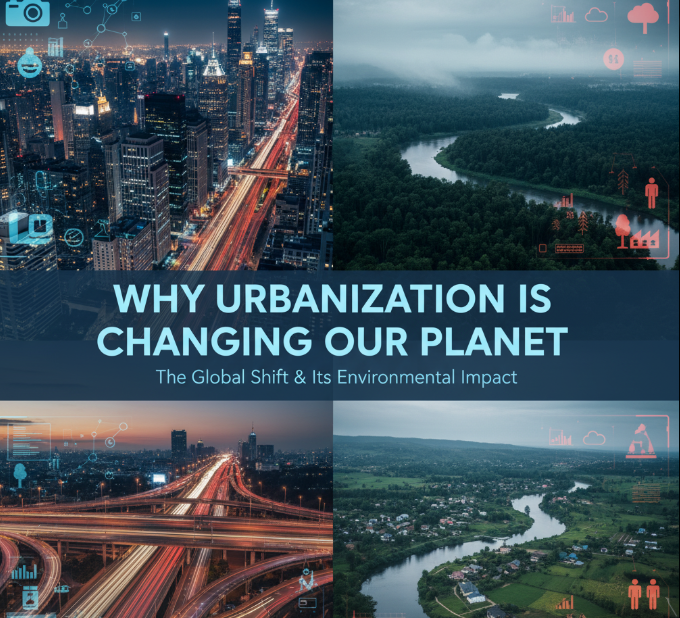Now picture taking a step down just one street, and encountering speakers of five languages, smelling the foods of three continents, viewing people in traditional dress from throughout that world — outside your home time zone, but in a place called New York. This is not science fiction — this is life for many people living in some of the world’s most diverse regions. From crowded cities to whole countries, these places remind us what happens when cultures, languages and traditions eat dinner together in one gorgeous buffet.
Diversity is not simply variety in a single setting. It’s also about the languages spoken, the foods eaten, the religions practiced and the traditions celebrated. Certain places have become so diverse for kinds of historical reasons, some because of the positions they’re in, and some because of what they allow people to do. So why don’t we delve into these amazing locations and find out what makes them so unique.
What Is a Truly Diverse Place?
Before we get into the particulars, let’s discuss what diversity actually is. A diversified area can be diverse in all aspects of life and culture.
The Key Elements of Diversity
Cultural Diversity — Cultural diversity occurs when people from a variety of countries and different demographics come together — bringing with them their own cultures, traditions, and values. You may get Chinese New Year parties one month, Diwali festivals the next.
Linguistic Diversity — Many languages are spoken in daily life. In some areas, street signs appear in four or five languages and people will switch between them as effortlessly as blinking.
Religious Diversity — Religious diversity occurs where more than one religion is openly practiced. Churches and mosques and temples, and synagogues, could be within blocks of each other.
Ethnic Diversity — This is when more than one ethnicity lives in the same location. These organizations often retain their separate identity while contributing to the community at large.
Biological Diversity — Biological diversity also matters. Some areas are varied in their ecosystems, wildlife and plant life allowing for environments that nature in itself can be different.
A Closer Look: A Tour Through the World’s Most Diverse Places
Southeast Asia: Where Cultures Collide and Coalesce
The corner of the world that is Southeast Asia is one of its most diverse. It’s home to countries such as Indonesia, Malaysia, Singapore, Thailand and the Philippines.
Indonesia: A Nation of Thousands
Indonesia isn’t just diverse — it is mind-blowingly complex. It’s a country that spans more than 17,000 islands. More than 700 languages are spoken here, one of the world’s richest concentrations of linguistic diversity.
The residents are Javanese, Sundanese and Batak as well. Islam, Christianity, Hinduism and Buddhism all have substantial numbers of adherents. In Bali, Hindu temples fill out the landscape, while in Jakarta you’ll see many Islamic mosques.
Singapore: The World’s Best Home Away From Home
This little island nation packs a mighty punch of diversity in this mere 280 square miles. The main ethnic groups of island residents are served by four official languages — English, Mandarin, Malay and Tamil.
You can see this diversity simply by walking through Singapore’s neighborhoods. On the red-lanterned, dumpling-scented streets of Chinatown. Little India bursts with vivid saris and the scent of curry. And Arab Street with its lovely mosques and Middle Eastern restaurants. These diverse clusters coexist with one another, shaping a cultural landscape found nowhere else.
Malaysia: Unity in Variety
Malaysia’s diversity reflects a mix of Malay, Chinese and Indian people as well as indigenous populations in East Malaysia. The country is devoutly Islamic, though it also safeguards religious freedom, so temples, churches and mosques stand side by side.
Food, in Malaysia, is a perfect metaphor for the story of diversity. Nasi lemak is a Malay dish while dim sum represents Chinese influence and roti canai belongs to Indian sources. These foods don’t merely coexist, they have blended to produce new and uniquely Malaysian dishes that are a fusion of several different cultural influences.
North America: The Story of a Continent and Its People
Immigration has forged North America, and the U.S. in particular, for centuries. The constant influx of people from the entire world makes for some terrifically diverse areas.
New York City: Melting Pot Extraordinaire
There are people from literally every country on Earth in New York City. More than 800 languages are spoken in its five boroughs, the highest number of any city in the world.
Queens, which is one of NYC’s five boroughs, has been referred to as the most diverse urban area on earth. You can eat real food from dozens of countries, go to religious services in hundreds of languages and be part of cultural celebrations all year long.
This diversity is reflected in the neighborhoods of the city. Flushing is home to one of the largest Chinese communities outside Asia. Jackson Heights has lively South Asian and Latin American communities. Brighton Beach is sometimes called “Little Odessa” because of the prevalence of Russian and Ukrainian residents.
Toronto: Canada’s Multicultural Hub
Toronto boasts that more than half its residents were born outside Canada. More than 200 ethnic groups live in this city, and some 160 languages are spoken here.
Canada has official policies that encourage immigrants to maintain their cultural heritage. The result is a city where diversity rejoices, rather than one in which it is squelched. Caribana is an annual Caribbean carnival event, centered in the city’s large West Indian population.
Los Angeles: A Meeting of East and West
The diversity of L.A. mirrors its geography and history. A Pacific coast city near Mexico, it is a magnet for immigrants from Asia and Latin America. Asian cultures and traditions are well represented in Koreatown, Chinatown, Little Tokyo and Thai Town. In East LA Mexican and Central Americans are predominant.
And Hollywood has made L.A. an international household name, attracting creative types from all over. This entertainment industry tie gives an additional layer to a city already brimming with culture.
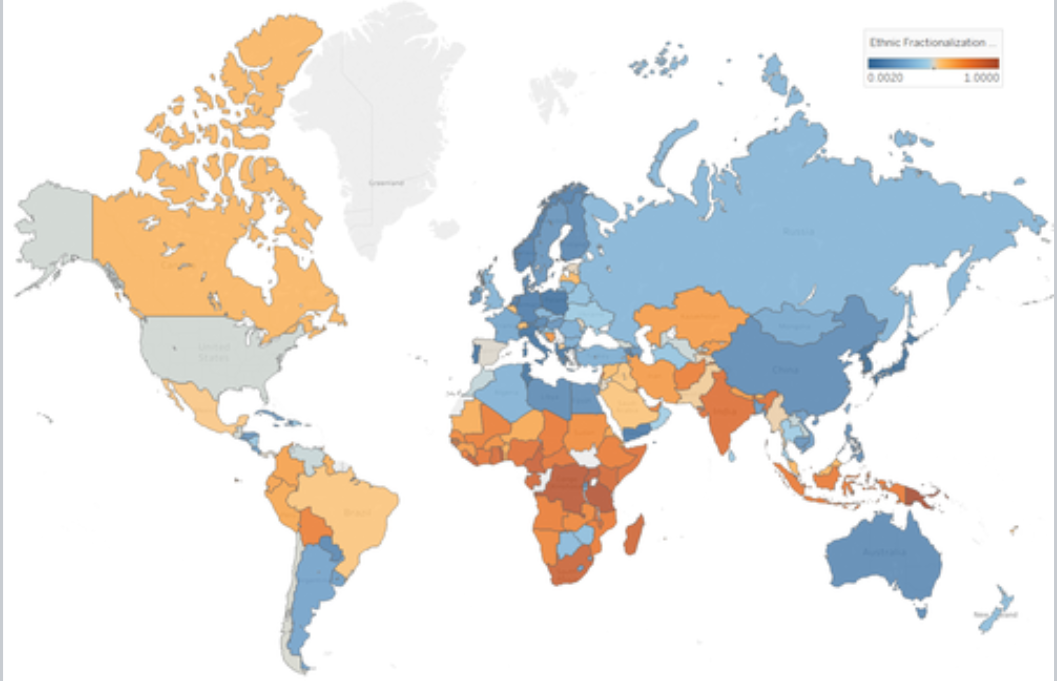
Europe: Old World, New Diversity
Europe has grown more multicultural over the past few decades. Although in the past they may have been far more homogeneous, several European cities now look little different from some North American ones.
London: A Global City
London has changed beyond recognition in the past half-century. Today, more than 300 languages are spoken in London schools. Nearly 40 percent of London residents were born outside the U.K., which makes for a range of accents far more varied than when Dick Whittington wandered into town.
Various parts of London demonstrate this diversity. Brixton is a hub of the Afro-Caribbean community. The area around Brick Lane is known for its Bangladeshi population and curry houses. Edgware Road has Middle Eastern restaurants and businesses. This variety makes London one of the most thrilling food cities on earth.
-
If you found this interesting, you’ll love: How Volcanoes Create New Land Over Time
Amsterdam: A Welcoming Port City
Amsterdam has been a diverse place for centuries, partly owing to its role as a major port. About half its residents are immigrants today. From Suriname, Morocco, Turkey and beyond, communities have made Amsterdam home.
The city’s voice of tolerance and openness has drawn a lot of people from all over the globe. This is not only about immigrants, but also international students, artists and business people who contribute to the cultural melting pot.
Paris: France’s Diverse Capital
Paris and the nearby suburbs are highly diverse, though this fact is often forgotten. Significant North African, West African and Asian communities also exist in the city. The city’s metros and streets hum with a variety of languages.
In official French policy, there are no ethnic categories; the idea is to treat everyone as just French. But the cultural heritage is unmistakable in the city’s quarters, its markets and restaurants.
The Middle East: Ancient Crossroads
The Middle East has been a crossroad of cultures, religions and commercial exchange for thousands of years. This history has also created pockets of stunning diversity.
Dubai: The Modern Cosmopolitan City
Dubai could be the world’s most cosmopolitan city by proportion. More than 85% of its residents are not native to this country. Indians, Pakistanis, Bangladeshis, Filipinos and people from over 200 nationalities call this home.
This kind of tremendous variety has a unique effect. The official language is Arabic however, English is commonly used. You’re going to hear Hindi, Urdu, Tagalog and dozens of other languages every day. The food scene reflects cuisines from around the globe.
Istanbul: Where Continents Meet
Its two parts straddle, quite literally, the continents of Europe and Asia. That geographical location has rendered it diverse for ages. And as the seat of the Ottoman Empire, it drew people from everywhere.
Istanbul has remained cosmopolitan to this day. Languages spoken include Turkish, Kurdish and Arabic. The city has long been a center of Muslim, Christian and Jewish life. That mixture of religions has left architectural wonders, like the Blue Mosque, Hagia Sophia and old synagogues, strewn all over the city.
Latin America: A Mix of Indigenous, European, and African Influences
The diversity of Latin America stems from its layered history of what began with indigenous peoples and the European colonization that followed it along with African slavery — but also later immigration from Asia and the Middle East.
São Paulo: Brazil’s Megacity
São Paulo is not only the largest city in the Southern Hemisphere but also a very diverse one. More slaves were sent to Brazil than anywhere else in the Americas, and São Paulo’s population is home to the largest number of people of African descent outside Africa. The city is also home to the world’s largest Japanese community outside of Japan, as well as large Italian, Portuguese, Lebanese and Syrian populations.
It’s like traveling the globe when strolling through various São Paulo neighborhoods. Liberdade has Japanese influences everywhere. Korean and Jewish businesses are also found in Bom Retiro. Bixiga is celebrated for Italian culture and restaurants.
Mexico City: Layers of History
Mexico City is built on the old Aztec capital of Tenochtitlan. This combination of indigenous and Spanish colonial history gives rise to a unique variety. Add to that mix more contemporary immigration from other Latin American countries, and you wind up with a mixed cultural terrain.
Its indigenous character is blended with the European heritage. Nahuatl, the Aztec language, continues to influence Mexican Spanish. Both traditional pre-Columbian foods and international cuisine are sold in markets.
Africa: The Birthplace of Diversity
It’s where humans first evolved, and is still the continent with the most genetic diversity. This diversity on the genetic level reflects itself in a rich cultural and linguistic heritage.
Lagos: Nigeria’s Booming Metropolis
Lagos is one of Africa’s biggest cities and incredibly diverse. Nigeria has more than 250 ethnic groups and over 500 languages. It draws people from all those groups as well as from West African immigrants.
Different cultures throb away in the city’s veins, and add to its character. The Yoruba, Igbo and Hausa are Nigeria’s three largest ethnic groups, but dozens of others remain. English is the lingua franca but many local languages are out on the street.
Cape Town: Gateway to the Rainbow Nation
Cape Town is a wonderful microcosm of South Africa. The city is also home to considerable Black African, Coloured (often of mixed ethnic background), White and Asian communities. The blend of groups contributed to a distinct culture; Cape Malay cuisine, which merges Indonesian, Indian and African flavors, is just one example.
Cape Town is no exception to diversity and its people speak many of the country’s eleven official languages. The city is also home to a variety of faiths; Christianity, Islam, Hinduism and traditional African religion are practiced in the area.
Why Diversity Matters
Living in diverse communities is good for all of us, not just minorities or immigrants.
Economic Advantages
Diverse cities are often hotbeds of economic innovation. When you get people from different backgrounds in the room to work together, they bring different perspectives that encourage creativity. The world’s most valuable companies today are in many cases global firms that prosper in far-flung cities, tapping into talent from anywhere.
Studies have shown that companies with a diverse workforce perform better financially. They do better work and make products that appeal to more people. According to research on workplace diversity and economic performance, diverse teams consistently outperform homogeneous ones in innovation and decision-making.
Cultural Enrichment
Diversity makes life more interesting. You can sample dishes from dozens of countries, hit up cultural festivals year-round and learn about different traditions without spending a dime on airfare. That exposure expands horizons and makes for more empathetic people.
The arts — music, literature and art as well — gain from diversity, too. Artists learn so much from each other even if they are not from the same backgrounds, and like jazz, when two styles blended together beautiful new things were invented. Consider how hip-hop conflated African-American, Caribbean and Latin elements into something new.
Social Benefits
Being raised in different-background environments gives people important skills. They learn to reach across cultural divides, take in different perspectives and be at ease with people who are not like them. These skills are increasingly important in our networked world.
Meanwhile, diverse communities also tend to be more resilient. The more a region has people with links to other parts of the world, the better it can manage changes and challenges. More than one outlook enhances problem solving.
Challenges That Come With Diversity
Although diversity has its benefits, it is also accompanied by challenges that localities need to overcome.
Communication Barriers
It isn’t easy for communication when many languages are spoken. Schools have to educate children who do not all speak the same first language at home. Government service should be conducted in the languages of people who need them. When doctors and patients can’t communicate in a common language, medical care gets complicated.
Many different cities have found solutions. In Singapore we learn several languages in school. The city offers translation services for important interactions with government. These are useful but are resource-intensive and also need planning.
Social Tensions
Sometimes groups that are of different types find it difficult to get along. Old battles could persist in new theaters. Pressures and competition for jobs and resources can create friction. Miscommunications happen even more because of cultural differences.
Successful diverse areas expend time and effort to reduce tensions. Community programs help bridge groups that don’t normally comingle. Schools educate about cultures and histories. Leaders show respect for all constituencies. Such efforts make a difference, but vigilance is required.
Integration vs. Separation
Communities are wrestling with how much they want integration among different groups. Must every member of a minority culture make the dominant culture their own? Is it better for communities to retain separate identities? The most diverse regions come up with a middle ground, not quite rejecting cultural preservation but not demanding common identity either.
This balance looks different everywhere. Canada’s official multiculturalism contrasts with France’s treatment of everyone simply as French. Singapore nurtures different ethnic groups while it forms a national identity. There is no perfect answer, and regions still experiment.
What These Places Can Teach Us
These diverse areas teach us a lot about being neighbors.
Tolerance and Respect
The most successful diverse parts of the world have established robust liberal norms. Folks don’t need to agree upon or understand every divergent practice, but they respect others’ rights to preserve traditions. It’s what allows for peaceful cohabitation.
Flexibility and Adaptation
Newcomers and native inhabitants alike must be adaptable in diverse areas. Immigrants acculturate and assimilate in new environments. Long-time residents cope with changing demographics and new influences. It’s an exchange of adaptation that makes strong communities.
The Power of Food
Food is a wondrous linchpin across cultures. Enjoying a meal together can bridge the gap and lead to understanding. In varied places, food serves as a universal language. That’s why the most diverse cities tend to be also those with the best food scenes.
Shared Spaces and Activities
Different groups come together at parks, markets, sports and public events. When people of different backgrounds forge friendships in neutral settings, stereotypes erode. Building and sustaining these common spaces is how diversity remains strong.
The Future of Diversity
Trends across the globe suggest that the world is becoming more, not less, diverse.
Increasing Migration
Migration will continue to be driven by climate change, economic opportunities and political instability. Cities and regions that manage diversity well are more likely to draw newcomers. Those who were struggling with it will see people leave.
Technology’s Role
Technology helps people stay connected to their original cultures when they move away. That could mean that future diversity may not end up looking all that different, with people finding ways to hold more tightly to transnational identities.
Younger Generations
Younger people who come of age in diverse surroundings often don’t have the same mind-sets as their predecessors. They’re more comfortable with diversity and more capable of cross-cultural friendship or relationship. This bodes well for diversity becoming more organic over time.
Summary Table: Key Diverse Regions
| Region/City | Dominant Source(s) of Diversity | Approximate Languages Spoken | Unique Characteristic |
|---|---|---|---|
| New York City | Immigration from all over the world | 800+ | Most linguistically diverse city |
| Singapore | Chinese, Malay, Indian, expat | 4 official languages | Government-directed diversity |
| Dubai | International workforce | 200+ nationalities | More than 85% are foreign-born |
| Toronto | Global immigration | 160+ | Official multiculturalism policy |
| London | Commonwealth and EU migration | 300+ | Historical global connections |
| São Paulo | European, Asian, African heritage | Several | Largest Japanese diaspora community |
| Lagos | Nigerian ethnic groups | Over 500 throughout the country | Very rapid urbanization blending groups |
| Indonesia | Indigenous island populations | Around 700 distinct languages | Most linguistically diverse nation |
Wrapping It All Up
The world’s most diverse regions demonstrate to us that it is possible for people from different backgrounds to live together and thrive. These locations aren’t perfect — they have real struggles with communication, integrating and social harmony. But they also capture the enormous benefits of diversity.
From Singapore’s delicate maintaining of ethnic groups to New York’s mixed salad of cultures, each diverse region has its own way. Some stress the need to keep communities’ identities while others celebrate integration. Some rely on official policies, while others allow diversity to flourish organically.
What is evident is that diversity is rapidly becoming the rule, not the exception. As the world becomes more connected by technology, trade and human movement, there will be more diverse places. The parts of the world that have become good at coping with diversity offer lessons.
And even if you don’t live in a diverse area, these places serve as a reminder of humanity’s remarkable variety. They demonstrate that our differences don’t have to pull us apart — they can enliven, inspire and bring us into deeper connection with one another. If the future is anything, it’s diverse, and these regions can show us how to make that future shine.
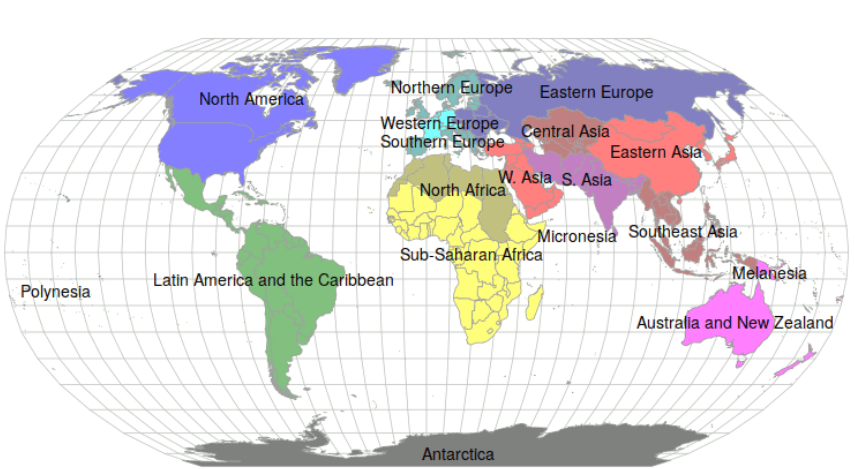
Frequently Asked Questions
What are the most diverse countries in the world?
Indonesia is frequently named as the most linguistically diverse nation with well over 700 languages. Papua New Guinea has still more languages per head of population. For ethnic diversity, India and Nigeria are most diverse with each having around a few hundred ethnic groups. The answer depends on how you count diversity.
Why do port cities often tend to be more diverse?
Port cities traditionally have been places of exchange and movement. People, cargo and ideas arrived by ship from afar. Sailors from various countries made home in the port cities. This centuries-long tradition of global exchange left the port city naturally diverse. Great cities like New York, Singapore, Amsterdam and Dubai all grew up around major ports.
How does diversity make the economy stronger?
Multicultural areas draw global businesses that require employees who can think across markets. Immigrants have historically started businesses at higher rates than native-born residents. A mix of perspectives and approaches is key to spawning innovation. Research proves that diverse teams are more profitable and make better decisions than homogeneous ones.
How does diversity differ from multiculturalism?
Diversity just means variety — different kinds of people, cultures, or ideas in one place. Multiculturalism is a policy or even a philosophy about how to manage that diversity. It generally means encouraging different cultural groups to retain their distinct identities while making them part of the broader society. Not every diverse place has an official “multiculturalism” policy.
Can a region be too diverse?
Some say extreme diversity diminishes communication and undermines social cohesion. But make no mistake, many of the world’s most successful and thriving cities are also among the most diverse. The secret, it seems, is having institutions and policies that facilitate different groups communicating and cooperating freely. When managed properly, high diversity can be very beneficial.
How is religious diversity different from ethnic diversity?
Ethnic diversity means various ethnic groups, which are people who share ancestors, a common language or cultural traditions. Religious diversity refers to various religions being practiced. Sometimes the two overlap, but not always. For instance, Arab Christians and Arab Muslims share an ethnicity but have different religions. Indian Hindus and British Hindus are one in religion but separate by ethnicity.
Why do some diverse places thrive while others falter?
Success depends on many factors. Strong institutions that are predicated on giving all groups a fair shake help. Economic opportunity that’s for everyone calms things down. Education that provides lessons in various cultures fosters understanding. Also valuable is leadership that models respect for all groups. History between groups is a factor — if groups have long-standing disputes, integration is more difficult.
What can schools do to manage classroom diversity?
Schools located in diverse areas provide language support for pupils learning the majority language. Teaching about other cultures and histories helps all kids understand one another. Observing cultural holidays and traditions help everyone to feel included. Training teachers to appreciate cultural distinctions in learning styles and communication is also crucial. The finest schools use diversity as a learning advantage rather than treating it as a problem to solve.

